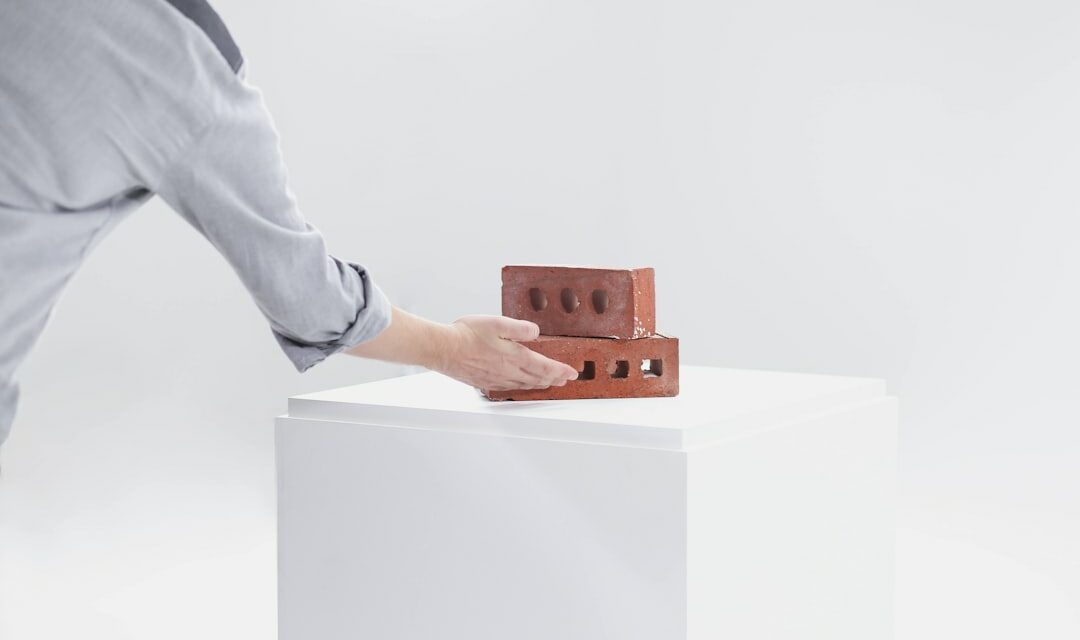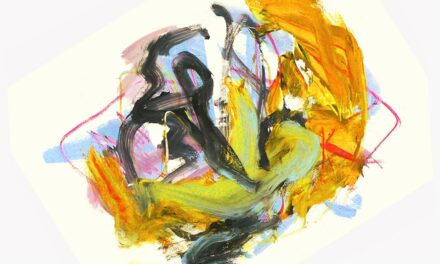Dada, an avant-garde art movement of the early 20th century, emerged in response to the disillusionment and trauma caused by the First World War. Originating in Zürich, Switzerland, in 1916, Dada quickly spread to other European cities and New York. The movement was characterised by its rejection of traditional artistic values and its embrace of absurdity, irrationality and chaos.
Dada artists sought to challenge conventional notions of art and culture through provocative and often nonsensical works. They employed techniques such as collage, photomontage and found objects to create pieces that defied traditional aesthetics. Notable Dada artists included Marcel Duchamp, Man Ray and Hannah Höch.
Although short-lived, Dada’s influence on subsequent art movements, particularly Surrealism, was significant and long-lasting.
Summary
- Dada originated in Zurich during World War I as a response to the absurdity and chaos of the war.
- Dada artists rejected traditional artistic techniques and embraced absurdity, chance, and randomness in their work.
- Dada’s influence on culture and society can be seen in its subversion of traditional values and its embrace of anti-art and anti-establishment ideas.
- Key figures in the Dada movement include Marcel Duchamp, Tristan Tzara, and Hannah Höch, who were known for their provocative and unconventional artistic practices.
- Dada’s legacy in contemporary art can be seen in the continued use of absurdity, chance, and anti-establishment ideas in art and culture.
The movement originated in Zurich, Switzerland, in 1916, at the Cabaret Voltaire, a nightclub that became a gathering place for artists, writers, and intellectuals seeking to challenge traditional artistic and cultural norms. The name “Dada” itself is said to have been chosen at random from a French-German dictionary, reflecting the movement’s rejection of logic and reason. Dadaists sought to create art that was anti-aesthetic, anti-rational, and anti-establishment, embracing chaos, absurdity, and chance as central elements of their work.
The movement quickly spread to other European cities such as Berlin, Paris, and New York, where it continued to evolve and influence the development of modern art.
The Rejection of Tradition
The movement’s founders, including Hugo Ball, Tristan Tzara, and Emmy Hennings, sought to create a new form of art that reflected the chaos and absurdity of the modern world.
Dada art was characterised by its use of non-traditional materials, such as newspaper clippings, fabric scraps, and everyday objects, as well as its rejection of conventional artistic principles such as composition, perspective, and beauty.
Challenging Societal Norms
Dadaists also embraced performance art as a means of challenging societal norms and expectations, staging provocative and often nonsensical events that sought to shock and disrupt the status quo.
Questioning the Nature of Art
Through their radical approach to art-making, Dadaists sought to dismantle the traditional boundaries between art and life, challenging viewers to question their assumptions about the nature of art and the role of the artist in society.
Dada as an Art Movement
Dada was a revolutionary art movement that sought to challenge and subvert traditional artistic and cultural norms. The movement’s artists rejected the idea of art as a precious or sacred object, instead embracing everyday materials and found objects as a means of creating works that were anti-aesthetic and anti-rational. Dada art was characterized by its use of collage, assemblage, and readymades – ordinary objects that were repurposed or recontextualized as works of art.
Dadaists also embraced performance art as a means of challenging societal norms and expectations, staging provocative and often nonsensical events that sought to shock and disrupt the status quo. Through their radical approach to art-making, Dadaists sought to dismantle the traditional boundaries between art and life, challenging viewers to question their assumptions about the nature of art and the role of the artist in society. Dada art was also marked by its rejection of traditional artistic principles such as composition, perspective, and beauty.
Dadaists sought to create works that were deliberately chaotic, absurd, and nonsensical, reflecting the disorienting experience of living in a world torn apart by war and social upheaval. The movement’s embrace of chance and randomness as central elements of artistic creation further challenged conventional notions of artistic skill and intentionality. Dada artists also sought to blur the boundaries between different artistic disciplines, incorporating elements of poetry, music, theatre, and visual art into their work.
This interdisciplinary approach reflected the movement’s rejection of traditional artistic hierarchies and its desire to create a new form of art that was free from the constraints of tradition and convention.
Dada’s Influence on Culture and Society
The Dada movement had a profound influence on culture and society during its brief but impactful existence. By challenging traditional artistic and cultural norms, Dadaists sought to provoke viewers into questioning their assumptions about the nature of art and the role of the artist in society. The movement’s embrace of chaos, absurdity, and chance as central elements of artistic creation reflected the disorienting experience of living in a world torn apart by war and social upheaval.
Dadaists also sought to dismantle the traditional boundaries between art and life, blurring the distinction between artistic practice and everyday experience. Dada’s influence extended beyond the realm of visual art, impacting literature, music, theatre, and design. The movement’s embrace of chance and randomness as central elements of artistic creation challenged conventional notions of artistic skill and intentionality.
Dadaist ideas also had a significant impact on the development of Surrealism, an artistic movement that emerged in the 1920s and sought to explore the unconscious mind through dreamlike imagery and irrational juxtapositions. The legacy of Dada can also be seen in the work of contemporary artists who continue to challenge traditional artistic and cultural norms through their use of non-traditional materials, found objects, performance art, and interdisciplinary approaches to art-making.
Key Figures in the Dada Movement
The Dada movement was comprised of a diverse group of artists, writers, poets, and performers who sought to challenge traditional artistic and cultural norms through their radical approach to art-making. Some key figures in the Dada movement include Hugo Ball, a German writer and poet who co-founded the Cabaret Voltaire in Zurich; Tristan Tzara, a Romanian-French poet who is credited with coining the term “Dada” and writing one of the movement’s key manifestos; Marcel Duchamp, a French-American artist known for his readymades – ordinary objects that were repurposed or recontextualized as works of art; Sophie Taeuber-Arp, a Swiss artist known for her pioneering work in abstract art and textile design; and Francis Picabia, a French artist known for his provocative paintings that challenged traditional notions of beauty and composition. These key figures played a crucial role in shaping the development of the Dada movement through their innovative approaches to art-making and their willingness to challenge conventional artistic and cultural norms.
Their work continues to inspire contemporary artists who seek to push the boundaries of artistic expression and challenge viewers to question their assumptions about the nature of art and the role of the artist in society.
Dada’s Legacy in Contemporary Art
Influencing Contemporary Artists
The movement’s embrace of chaos, absurdity, and chance as central elements of artistic creation continues to inspire artists who seek to create works that reflect the disorienting experience of living in a world torn apart by war and social upheaval. Dadaist ideas also continue to influence contemporary artists who seek to blur the boundaries between different artistic disciplines, incorporating elements of poetry, music, theatre, and visual art into their work.
Contemporary Movements
The legacy of Dada can also be seen in contemporary movements such as Fluxus, an international network of artists, composers, and designers who sought to blur the boundaries between different artistic disciplines through their use of performance art, experimental music, and happenings. The legacy of Dada can also be seen in contemporary movements such as Neo-Dadaism, which emerged in the 1950s as a reaction against Abstract Expressionism and sought to revive the spirit of Dada through its use of found objects, assemblage, and performance art.
Challenging Traditional Norms
The legacy of Dada continues to inspire contemporary artists who seek to challenge traditional artistic and cultural norms through their radical approach to art-making.
The Manifesto of Dada
The Manifesto of Dada was a key document that outlined the principles and goals of the Dada movement. Written by Tristan Tzara in 1918, the manifesto sought to articulate the movement’s rejection of traditional artistic techniques and materials in favour of embracing chaos, absurdity, and chance as central elements of artistic creation. The manifesto also called for a radical rethinking of the role of the artist in society, challenging viewers to question their assumptions about the nature of art and its relationship to everyday life.
The Manifesto of Dada also sought to provoke viewers into questioning their assumptions about the nature of art by advocating for a new form of art that was free from the constraints of tradition and convention. The manifesto’s embrace of non-traditional materials such as found objects, collage, and readymades reflected the movement’s desire to create works that were deliberately chaotic, absurd, and nonsensical. Through its radical approach to art-making, the manifesto sought to challenge viewers to rethink their understanding of what constitutes art and how it relates to their lived experience.
Exploring Dada’s Absurdist and Nihilistic Themes
Dada’s absurdist and nihilistic themes were central to its radical approach to art-making. The movement’s embrace of chaos, absurdity, and chance as central elements of artistic creation reflected the disorienting experience of living in a world torn apart by war and social upheaval. Dadaists sought to create works that were deliberately chaotic, absurd, and nonsensical in order to challenge viewers’ assumptions about the nature of art and its relationship to everyday life.
Dada’s absurdist themes were also reflected in its rejection of traditional artistic principles such as composition, perspective, and beauty. The movement’s embrace of non-traditional materials such as found objects, collage, and readymades further challenged conventional notions of artistic skill and intentionality. Dadaists also embraced performance art as a means of challenging societal norms and expectations, staging provocative events that sought to shock and disrupt the status quo.
Through its radical approach to art-making, Dada sought to dismantle the traditional boundaries between art and life by blurring the distinction between artistic practice and everyday experience. In conclusion, Dada was a revolutionary art movement that emerged in response to the disillusionment caused by World War The movement’s rejection of traditional artistic techniques and materials in favour of embracing chaos, absurdity, and chance as central elements of artistic creation had a profound influence on culture and society during its brief but impactful existence. The legacy of Dada continues to inspire contemporary artists who seek to challenge traditional artistic and cultural norms through their radical approach to art-making.
If you are interested in learning more about art movements, you may want to check out an article on Pop Art. Pop Art was a movement that emerged in the 1950s and 1960s in Britain and America, and it was characterized by its use of popular culture and consumerism as subject matter. You can read more about it here.
FAQs
What is Dada?
Dada was an art movement that emerged during World War I in Zurich, Switzerland. It was characterized by its rejection of traditional artistic values and its embrace of chaos, irrationality, and absurdity.
When did Dada begin?
Dada began in 1916, during World War I, in Zurich, Switzerland. It later spread to other cities such as Berlin, Paris, and New York.
What were the key principles of Dada?
Dada was characterized by its rejection of traditional artistic values, its embrace of chaos, irrationality, and absurdity, and its use of unconventional materials and techniques.
Who were some key figures in the Dada movement?
Key figures in the Dada movement included artists such as Marcel Duchamp, Tristan Tzara, Hans Arp, and Francis Picabia, as well as writers and poets such as Hugo Ball and Richard Huelsenbeck.
What was the impact of Dada on the art world?
Dada had a significant impact on the art world, as it paved the way for the development of Surrealism and other avant-garde movements. It also challenged traditional notions of art and paved the way for the development of conceptual art and performance art.




